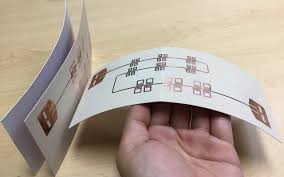
Breaking News
 "A Very Good, Early Step" - Trump Announces Meeting Between Putin and Zelensky...
"A Very Good, Early Step" - Trump Announces Meeting Between Putin and Zelensky...
 Comer Discloses Some Details From Bill Barr's Deposition Related to Epstein Investigation (VIDEO
Comer Discloses Some Details From Bill Barr's Deposition Related to Epstein Investigation (VIDEO
 ADU Fever: Inside The Backyard Housing Boom In California
ADU Fever: Inside The Backyard Housing Boom In California
 How Much Energy Does ChatGPT's Newest Model Consume?
How Much Energy Does ChatGPT's Newest Model Consume?
Top Tech News
 Chinese Scientists Produce 'Impossible' Steel to Line Nuclear Fusion Reactors in Major Break
Chinese Scientists Produce 'Impossible' Steel to Line Nuclear Fusion Reactors in Major Break
 1,000 miles: EV range world record demolished ... by a pickup truck
1,000 miles: EV range world record demolished ... by a pickup truck
 Fermented Stevia Extract Kills Pancreatic Cancer Cells In Lab Tests
Fermented Stevia Extract Kills Pancreatic Cancer Cells In Lab Tests
 3D printing set to slash nuclear plant build times & costs
3D printing set to slash nuclear plant build times & costs
 You can design the wheels for NASA's next moon vehicle with the 'Rock and Roll Challenge
You can design the wheels for NASA's next moon vehicle with the 'Rock and Roll Challenge
 'Robot skin' beats human reflexes, transforms grip with fabric-powered touch
'Robot skin' beats human reflexes, transforms grip with fabric-powered touch
 World's first nuclear fusion plant being built in US to power Microsoft data centers
World's first nuclear fusion plant being built in US to power Microsoft data centers
 The mitochondria are more than just the "powerhouse of the cell" – they initiate immune...
The mitochondria are more than just the "powerhouse of the cell" – they initiate immune...
 Historic Aviation Engine Advance to Unlock Hypersonic Mach 10 Planes
Historic Aviation Engine Advance to Unlock Hypersonic Mach 10 Planes
 OpenAI CEO Sam Altman Pitches Eyeball-Scanning World ID to Bankers
OpenAI CEO Sam Altman Pitches Eyeball-Scanning World ID to Bankers
Engineers develop metal tags that you can attach to common objects and turn them into ...

(Natural News) Turning an everyday object into a smart device is now as easy as slapping a metal tag on it. Capable of being produced by any 3D printer, the electronic tag hooks up the item to the Internet of Things, an article in Science Daily stated.
Dubbed "LiveTag," each unit is made up of substrate materials. The surface of the tag bears a 3D printed design made of copper foil that reflect WiFi signals from a router. When the user touches the tag, the reflected WiFi signals get disrupted. The interruption can be detected by a smartphone or similar WiFi receiver.
A LiveTag can be attached to anything. Its recipient is not required to be electronic; it could be a door or a wall or a bottle of water. An object tagged this way becomes a smart device that is connected to the Internet of Things. When it is being used, it will inform a watching WiFi device of the event. So you will know when someone, for example, is eating that tagged chocolate you explicitly forbade everyone else from touching. (Related: Terminator REBOOTING: Smart microchip can self-start and operate even when the battery runs out.)
3D printed tag can turn anything into a smart device
Furthermore, LiveTag can be printed as a slender keypad or a control panel for a smart home. When used this way, the tag can remotely control Internet of Things appliances through their WiFi connection.
"Our vision is to expand the Internet of Things to go beyond just connecting smartphones, smartwatches and other high-end devices," explained University of California San Diego (UCSD) researcher Xinyu Zhang, who wrote the research paper describing the new printable metal tag. "We're developing low-cost, battery-free, chipless, printable sensors that can include everyday objects as part of the Internet of Things."
Zhang explained that LiveTag is designed to reflect selected radio signals within the frequency range covered by WiFi. The signal can be altered by swapping out the copper for a different material and printing a new design on the substrate. Doing so allows the tag to reflect other signals, such as the ones given off by Bluetooth, cellular, and LTE emitters.



